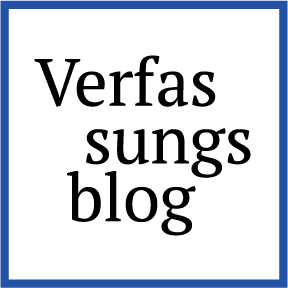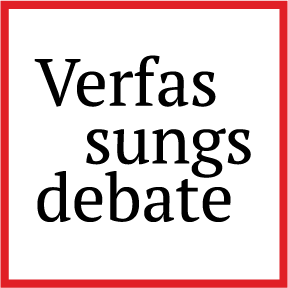The Habitats Directive as a Tool for Systemic Biodiversity Litigation
The Dutch Nitrogen Case II
On 22 January 2025, the District Court of The Hague found the Netherlands in breach of the Habitats Directive and the Dutch nitrogen targets by failing to stop the deterioration of protected habitats and by failing to prioritise the most vulnerable habitats through its nitrogen targets.
This blogpost provides an overview of the judgment and argues that the case enables a link between the location specific approach of EU nature protection and a systemic dimension and highlights the strength of the Habitats Directive. Conversely, it shows some limitations regarding the remedy and a missed opportunity to consider the longer-term and inter-generational impacts. Overall, it also points towards a broader structural problem of intensive agriculture in the EU.
Overview of the judgment
The case centres around four key concepts. First, the non-deterioration obligation under Art.6(2) of the Habitats Directive, which requires Member States to take appropriate measures to prevent the deterioration of protected habitats (Natura 2000 sites).
Second, the critical deposition value (CDV), which establishes a maximum nitrogen deposition value a habitat can tolerate without (significant) damage or deterioration (para 3.7). CDVs are scientifically established for each habitat type protected under the Natura 2000 regime in the Netherlands and were last updated in July 2023 (para 3.7).
Third, the Dutch statutory nitrogen targets requiring an increasing percentage of nitrogen-sensitive Natura 2000 areas to be brought under the CDV: at least 40% by 2025, at least 50% by 2030, and at least 74% by 2035 (cf. para 3.17).
Lastly, following various ecological studies, an Urgent List of habitats with moderate or poor recoverability, with resulting risks of irrecoverable habitat loss, was drawn up (para 3.29ff). A distinction is made between a red Urgent List with the very urgent habitats where nitrogen reduction is necessary by the end of 2025, and an orange Urgent List where reduction is necessary by 2030 (para 3.34).
Bringing these four elements together, Greenpeace argued that despite the 2019 Dutch Council of State ruling, that followed the Court of Justice of the EU (CJEU) nitrogen preliminary ruling in 2018 (C‑293/17 and C‑294/17), there had been insufficient progress made in reducing nitrogen pollution. Greenpeace therefore started civil law proceedings against the Dutch government in July 2023, combining duty of care arguments with the Habitats Directive.
In its 22 January ruling, the District Court of The Hague concluded that Greenpeace clearly demonstrated that Natura 2000 areas are deteriorating, that nitrogen deposition is an important cause of deterioration, and that the State failed to provide evidence that would remove any reasonable doubt that nitrogen deposition, since the year the sites were designated as Natura 2000 sites (1994, 2000 and 2004 in this case – para 5.20), contributed to the deterioration (para 5.25). As a result, the measures taken by the Netherlands to prevent and counteract the deterioration are insufficient. The Court stressed that while the substance of the measures is a matter for the government, this policy freedom does not extend to the timing and scope of the measures as they must be taken without delay and must achieve the result of preventing deterioration (para 5.28).
The Court agreed with Greenpeace that the statutory nitrogen targets should be regarded as the ‘minimum obligation’ and as an absolute lower limit for compliance with Art. 6 Habitats Directive (para 5.49). Consequently, the State is acting unlawfully by failing to take adequate measures to stop the deterioration, by failing to meet the 2025 target, and very likely failing to achieve the 2050 target (para 5.46 and 5.53).
In addition, the Court held that even though neither the Habitats Directive nor the statutory targets explicitly refer to a prioritisation of the most urgent habitats, the neglect of the most deteriorated habitats is not in line with the Directive’s objectives or the importance of ensuring the effective implementation of its provisions (para 5.59). Instead, the habitats where nitrogen deposition reduction is required most urgently must be prioritised in reaching the CDV targets (para 5.63-64). The Court held that while there was an obligation to restore all (very) urgent areas as soon as possible, it was not in a position to specify a precise point in time by when this obligation has to be complied with (para 5.87).
Therefore, the Court ordered the State to ensure compliance with its 2030 target of 50% of nitrogen-sensitive nature areas being below the CDV, while prioritising the nitrogen deposition within habitats on the Urgent List (para 5.78). No priority needs to be ensured amongst the areas on the Urgent List (para 5.77), thus allowing the State to prioritise ‘low hanging fruit’ habitats with fairly low CDV exceedances.
Lastly, the Court provided for a penalty of €10 million if the State does not comply with the 2030 statutory nitrogen target by 2030 due to the 2019 judgment, the scrapping of reduction measures of the previous government, and the lack of a new policy to ensure the 2030 targets will be met (para 5.96).
Combining location specificity while moving beyond the site-by-site approach
The case brings together the location-specificity of the most urgently deteriorating habitats, while combining it with a systemic approach that looks at deterioration in all Natura 2000 sites across the Netherlands. The Urgent List of habitats at risk of becoming irrecoverable appears crucial to bridging the gap between the site-level approach of Art.6(2) and a more holistic assessment of the impacts of nitrogen on all protected habitats.
Given that biodiversity litigation so far has often been site (or species-) specific, this case appears to be part of a shift towards more structural biodiversity challenges. While the case is still focused on one issue – nitrogen – rather than the destruction of biodiversity as such, the link between nitrogen and intensive agriculture more broadly suggests that the consequences will likely extend far beyond nitrogen.
While the Netherlands had national targets to reduce the pressure of nitrogen on protected habitats, it could be interesting to apply this approach where no binding targets exist, given the recent CJEU ruling requiring legally binding measures to address the drivers of deterioration (C-47/23, see also here for an analysis of the ruling). This was also highlighted by the Court, which, seemingly pre-empting calls from the current right-wing government, stated that scrapping national CDV targets would expose the Netherlands even further to infringement proceedings, particularly in light of the C-47/23 ruling stressing the need for legally binding and enforceable measures against the drivers of deterioration (para 5.72).
Causation as a strength of the Habitats Directive
While causation can be a challenge in strategic litigation that relates to diffuse pollution, particularly in climate litigation, the case shows that legal solutions can be found, demonstrating also the strength of Art.6(2) Habitats Directive as an obligation of result (cf para 5.10).
As a starting point, the Court referred to the CJEU’s Doñana judgment (C-559/19) and the recent German grasslands case (C-47/23) to reiterate that if scientific data shows that an action or omission leads to deterioration, then the burden of proof is on the Member State to remove any reasonable doubt that the act or omission leads to the deterioration of protected habitats (para 5.22). Then, it rejected all attempts by the State to avert responsibility.
First, the Court dismissed any arguments that the State should only bear partial responsibility due to 34% of nitrogen deposition (second to agriculture) originating from the surrounding countries (para 5.38). It dealt with it very briefly, simply stating that the Netherlands exports much more nitrogen deposition than it imports (four times as much, according to an Agriculture Ministry memorandum cited by the Court) which will reduce the willingness of neighbouring States to reduce nitrogen deposition for the benefit of the Netherlands (para 5.38). Consequently, the ‘foreign deposition’ was also held to be attributable to the Netherlands.
Second, while it was not disputed that other factors contribute to the deterioration of habitats, the Court concluded that this was irrelevant as nitrogen reduction was a ‘necessary condition’ to prevent further deterioration and to reverse the deterioration that has already occurred (para 5.44). Therefore, the state cannot escape responsibility due to the existence of other factors (cf. para 5.45).
Thirdly, the Court also clarified that whether some of the deterioration has been caused by deposition prior to the reference date is irrelevant (para 5.26). Art. 6(2) provides an obligation of result, and even if the root cause of deterioration had been nitrogen deposition prior to the reference date (which the State in any case failed to establish), there would be an obligation on the State to prevent this ‘historical’ deposition from causing current or future deterioration – for instance through the removal of nitrogen in the soil via plants or other recovery measures (para 5.26).
Point of no return vs ordering the impossible
A weakness of the Habitats Directive may, however, be that because it does not foresee such complete failure to comply with its non-deterioration obligation, it does not provide guidance on the timing or prioritisation to reverse deterioration when Member States breach this obligation (para 5.38).
Greenpeace had requested several alternative orders with the aim of bringing all (alternatively, as high of a proportion as possible) Urgent List habitats below the CDV as soon as possible, ideally by 2025. It requested a range of specific orders with varying deadlines and percentages (para 4.1).
However, the Court avoided making any order for 2025 or increasing the CDV percentage target for 2030, referring to the need to ensure the separation of power (para 5.73) and the impossibility of meeting the 2025 target (para 5.74). Instead, it granted the most subsidiary request by Greenpeace (meet statutory targets for 2030 – para 4.1.II), with the addition of the prioritisation of Urgent List habitats, rejecting all requests for a more ambitious approach to the nitrogen targets.
First, the Court considered that Greenpeace had not sufficiently demonstrated that the ‘point of no return’, where habitats would be lost forever, was approaching for the most urgent areas (5.81). Yet, leaving the door open for future cases, the Court continued: “if this had been different, an exception might have to be made on the basis of the prohibition of deterioration to the judge’s reluctance to determine extra-legal percentages” (i.e. percentages not established by statute) (para 5.81).
Second, the Court concluded that ordering that 100% of Urgent List (red) habitats reach nitrogen levels below the CDV by 2025 would be impossible (para 5.84), which Greenpeace appears not to have disputed.
Third, even though the Court acknowledged that a 75% reduction would be possible following the data relied upon by Greenpeace (para 5.83 and 5.85) it held that the separation of power prevented it from establishing a higher percentage than the legislation.
However, in considering these alternative orders, it seems that the Court did not balance the risk of no return with the (future) risk of impossibility. While the Court hinted that drastic measures would likely be required to reach some of the targets proposed by Greenpeace (para 5.83), it did not consider the impact of the current target trajectory on either the future risk of no return, the future difficulty to reach the targets, or the impossibility to achieve nitrogen levels below the CDV in all protected habitats – which the Habitats Directive arguably requires – in the future. Hence, the intergenerational equity impacts, along with the risk that the current target trajectory would bring the point-of-no-return closer, and thus require more drastic future measures, were not considered.
Not considering the intergenerational equity argument, famously endorsed by the German Federal Constitutional Court in the Neubauer climate case, appears to be a missed opportunity, especially because it has already been applied to the nitrogen context. In a 2020 ruling, the Higher Administrative Court of Schleswig-Holstein highlighted that continued nitrogen pollution depletes the natural denitrification resources and thus also impacts future generations (5 KN 10/20, Rn. 103). This argument of the intertemporal impact of nitrogen pollution was also made in a pending nitrogen eutrophication case brought by Deutsche Umwelthilfe in 2023, given the increased difficulty and costs to ensure drinking water with safe nitrates levels (see here, p.86).
A broader problem
This case joins a growing number of other nitrogen cases in the EU, highlighting a broader problem of nitrogen pollution fuelled by intensive agriculture.
In 2018, the CJEU ruled that Germany failed to meet its obligations under the Nitrates Directive in an infringement case (C-543/16). In 2023, the Higher Administrative Court of Lüneburg found Lower Saxony and North Rhine-Westphalia in breach of the Water Framework Directive due to nitrogen and ordered them to ensure compliance with the limit values as soon as possible while reversing the harm done (7 KS 8/21). The Council of State in Italy found the Lazio region in breach of the Drinking Water, Nitrates and Habitats Directives due to excessive fertiliser use around Lake Vico in 2023 and 2024. In Belgium, the Flemish government was also found in breach of the Nitrates Directive in 2023 (2022/2570/A), with the Commission referring Belgium to the CJEU in 20204.
These case examples show that nitrogen pollution is far from a ‘Dutch problem’ or a local issue. Instead, they illustrate an EU-wide problem that requires EU-wide solutions. In theory, the EU’s Common Agricultural Policy (CAP) – agricultural subsidies accounting for a third of the EU’s budget – has the specific objective of contributing to ‘halting and reversing biodiversity loss’ (Art.6(1)(f) Regulation 2021/2115). Member States are specifically required to demonstrate that their national CAP plan contributes to the achievement of the targets of environmental legislation, including the Habitats, Nitrates, Water and Water Framework Directives (Art. 109(2)(a)(v) Regulation 2021/2115).
Yet, this row of cases finding governments in breach of these very same obligations due to intensive agriculture suggests that instead of ensuring compliance with EU environmental law, the CAP continues to drive intensive agricultural practices that lead governments to fall short of their legal obligations. While national measures are needed to ensure compliance with the above rulings, a broader, more systemic shift in the EU’s CAP is necessary to enable the needed transition towards more sustainable agriculture.



